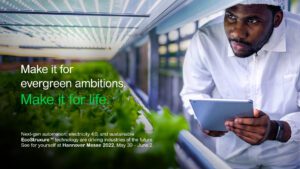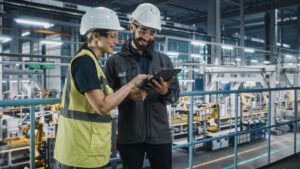To stay competitive, most manufacturers look to the latest technology features and enhancements. But with so many hardware and software platforms involved in running their businesses, maintaining a modern technology base can be complex, labor-intensive, and costly. In such an environment, achieving a best-of-breed approach to manufacturing systems is elusive. Universal automation has finally arrived as a legitimate technological approach that offers a viable option for addressing these challenges.
According to market intelligence firm IDC, global spending on the digital transformation related to business practices, products, and organizations is forecast to reach $2.8 trillion in 2025−more than double the amount allocated in 2020! The widespread drive to launch digital business initiatives changes how tasks are executed and decisions are made. Many organizations are rethinking traditional business processes and adopting information technology (IT) and operations technology (OT) convergence strategies to help enable those changes.
Global manufacturers are not immune to these seismic transitions. A growing momentum towards the acceptance and deployment of universal automation solutions, for example, is offering many manufacturers the prospect of long-term flexibility when it comes to adopting best-of-breed digital approaches to their production systems.
So what exactly is universal automation?
It’s an approach that decouples software from the hardware it traditionally runs on, promoting both software-centric and asset-centric automation and emphasizing the reuse of existing systems. It creates a new generation of “plug and produce” portable and interoperable solutions. Universal automation optimizes IT/OT convergence and sets the stage for so-called autonomous systems that drive speed and agility.
Increasing productivity through IT/OT convergence
Moving from the promises enlightened through field tests of universal automation software products such as Schneider Electric’s EcoStruxure Automation Expert two years ago to demonstration of improvements in the field across actual consumer packaged goods, logistics, and water and wastewater environments, we can now say that the EcoStruxure Automation Expert platform is generating benefits for manufacturers in three key areas:
- Bridging IT and OT – These plant resources now have a robust, reliable, and secure way to manage an IT/OT converged world. Platforms like EcoStruxure Automation Expert preserve the fundamental quality and reliability of traditional OT automation while taking advantage of the connectivity and flexibility of IT.
Most IT/OT convergence happens on two fronts: communications (supporting OT protocols like Modbus, Ethernet/IP and ProfNet while also supporting OPC UA and/or MQTT) and programming (event-driven capabilities embedded in the software while accommodating for cyclic-driven control needs). This allows both OT and IT staff to easily interface with languages and interfaces already familiar to them making the most of both worlds driving to 100% engineering efficiency in the design & build phase thanks to digital continuity and being ready for 100% operational effectiveness during the operate & maintain phase thanks to machine learning/artificial intelligence.
- Adding flexibility through virtual controllers – The EcoStruxure Automation Expert platform uses software-defined, centralized and/or decentralized, brand-agnostic virtual controllers within Windows/Linux-based industrial PCs to deliver advanced online services, remote support of field-based machine/process, and predictive analysis of machine/process
The tools in the platform offer both build time and runtime functions. Build time functions allow engineers to design the control application and manage IT interfaces simultaneously within the same environment. The runtime functions enable programs to be executed on any open hardware platform running Linux or Windows operating systems. This way, open hardware solutions can be selected during the latter stages of a project without impacting the software’s functionality.
- Enabling a phased-in approach with minimal disruption to existing operations – Using platforms like EcoStruxure Automation Expert, plant managers can approach digital transformation as a gradual evolution instead of a disruptive revolution, without any immediate changes to existing automation control parameters. EcoStruxure Automation Expert acts as an orchestrator of the installed base. Orchestration implies the coordination of real-time automation requirements, while interfacing to new layers of analytics and simulation. Together, these pieces help optimize productivity.
EcoStruxure Automation Expert also limits digital transition risks because traditional solutions still execute the control. At the same time, new technology enrichments can be added to boost production line performance. It is now 100% future-proof.
Improving efficiency and attracting IT-savvy staff
Companies that actively drive digital transformation across their organizations are embracing the universal automation approach because they:
- While an initial learning curve is inevitable when launching such projects, the long-term efficiency and productivity benefits far outweigh the initial inconveniences of approaching automation tasks in a new and different way.
- Understand that the new generation of workers coming on board are very IT savvy and prefer using tools – like universal automation – that can smoothly integrate the IT and OT worlds.
Learn more about how universal automation platforms can drive digital transformation benefits in your manufacturing facility with EcoStruxure Automation Expert.




